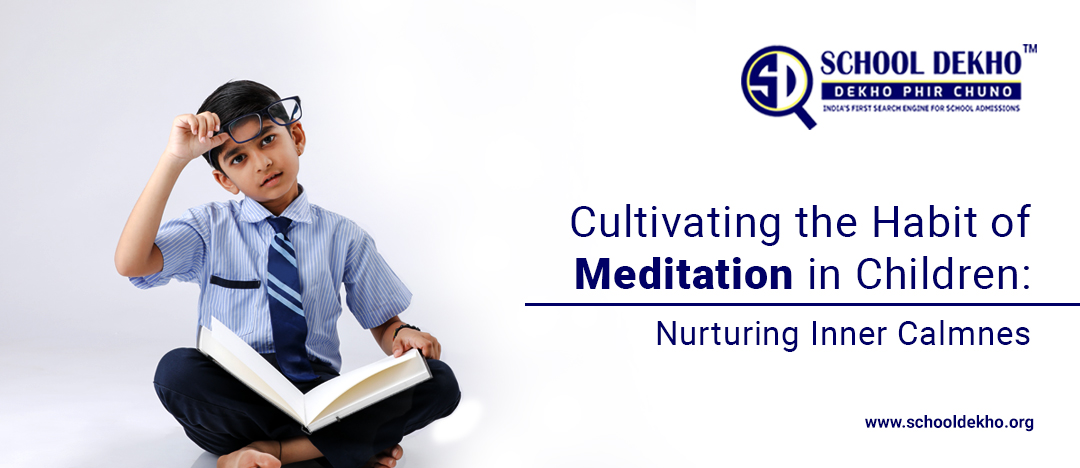
Cultivating the Habit of Meditation in Children: Nurturing Inner Calmness
In today's fast-paced and technology-driven world, teaching children the practice of meditation can be a valuable gift. Meditation offers numerous benefits, including enhanced focus, improved emotional well-being, and increased self-awareness. By introducing children to meditation at an early age, we can equip them with a lifelong tool for managing stress, promoting inner calmness, and nurturing overall well-being.
In this blog, we will explore some effective strategies to inculcate the habit of practicing meditation in children.
Lead by Example: Children are highly observant, and they often learn by imitating the behaviors of their parents or caregivers. Therefore, the first step in introducing meditation to children is to practice it yourself. Let your children witness your own meditation sessions, and speak to them about the positive impact it has on your well-being. When they see you prioritizing and enjoying meditation, they are more likely to develop an interest in it.
Keep it Simple and Age-Appropriate: When introducing meditation to children, it's important to make it simple and engaging. Start with short sessions, gradually increasing the duration as their attention span improves. Use age-appropriate language and explanations to help them understand the concept of meditation. You can incorporate playful elements, such as visualizations, storytelling, or guided imagery, to make the practice more enjoyable and relatable for children.
Create a Calm and Dedicated Space: Designate a specific area in your home as a meditation space for children. Make it inviting and comfortable, with cushions or a special mat. Decorate the space with items that evoke a sense of tranquility, such as plants, soft lighting, or calming artwork. Having a dedicated space for meditation will help children associate it with a peaceful environment and make it a regular part of their routine.
Make it a Daily Ritual: Consistency is key when establishing any habit, including meditation. Encourage children to set aside a specific time each day for meditation. Make it a ritual by incorporating it into their daily routine, such as before bedtime or after school. By making meditation a regular practice, it becomes ingrained in their daily lives, increasing the likelihood of its long-term adoption.
Use Guided Meditations and Mindfulness Exercises: Guided meditations and mindfulness exercises are excellent tools for children, as they provide structure and support during practice. There are numerous resources available, including books, apps, and online videos, specifically designed for children's meditation. These resources often use storytelling, visualization, or gentle prompts to guide children through the practice, making it more accessible and engaging for them.
Encourage Expression and Reflection: After each meditation session, encourage children to express their experiences and reflections. Ask open-ended questions, such as how they felt during the practice or what thoughts came to their mind. This helps them develop self-awareness and cultivates a sense of mindfulness beyond the meditation session. By allowing them to express themselves, you create a safe space for them to explore their emotions and thoughts.
Emphasize the Benefits: Highlight the benefits of meditation in a language that children can understand. Explain how it helps in reducing stress, improving focus, and promoting emotional well-being. Share stories or examples of how meditation has positively impacted other children or famous figures they admire. By emphasizing the benefits, children are more likely to develop a positive attitude toward the practice.
Contact Us:
Call: 1800 - 2588 - 074
Mail: info@schooldekho.org
Student’s Best Education Portal | School Dekho | India's First School Search Engine | Best Schools Near Me | Find Schools Near Me | Dekho Phir Chuno
#dekhophirchuno







Leave your thought here
Your email address will not be published. Required fields are marked *